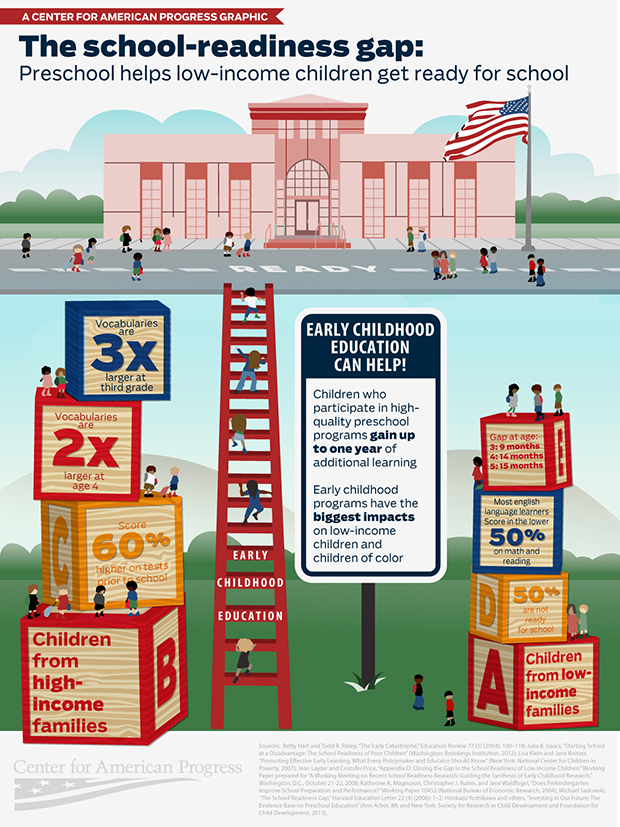Last week, Sen. Tom Harkin (D-IA), Rep. George Miller (D-CA), and Rep. Richard Hanna (R-NY) introduced bipartisan legislation to expand access to high-quality preschool for low-income children. The bill would partner with states to build on their existing preschool programs to serve more children and ensure that all programs meet high-quality standards needed to prepare children for school, including well-compensated teachers with a bachelor’s degree, small class sizes, and research-based curricula. In addition, a portion of funds would be available to states to support access to high-quality child care for infants and toddlers.
The bill would provide a much-needed opportunity to many low-income children who enter school behind their peers. By the time children set foot in kindergarten, low-income children are already months or years behind, and that gap only grows larger in elementary school and beyond. Access to high-quality early childhood education can help: Children who attend such programs gain up to one year of additional learning.
Take a look at the barriers that children from low-income families face in getting ready for school, and how preschool can help:
